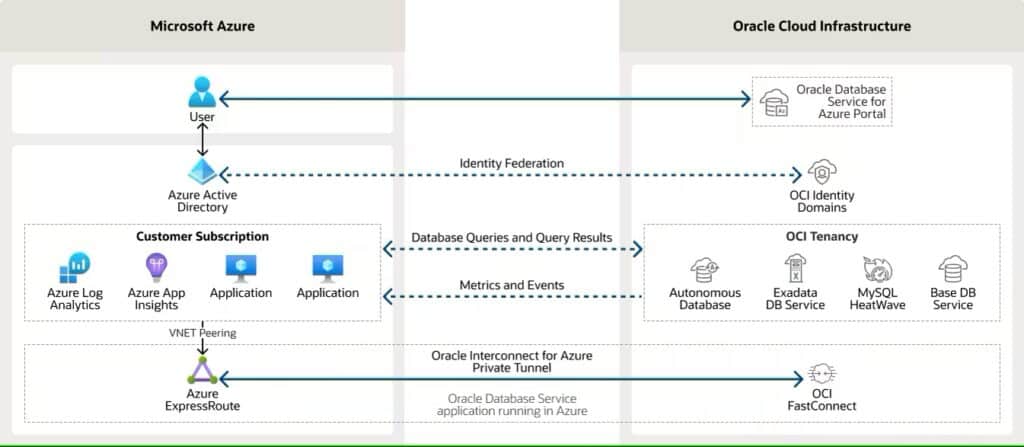Introduction
Microsoft and Oracle expanded their partnership, which benefits both companies by complementing each other’s cloud services. Oracle Database@Azure gives customers direct access to Oracle database services running on Oracle Cloud Infrastructure (OCI) and deployed in Microsoft Azure data centers. An example of how these services can interact is depicted in Figure 1 below.

More on the Oracle and Microsoft Partnership
Microsoft and Oracle have worked together since 2019, when
the companies
connected Microsoft Azure with OCI. Oracle Interconnect for Microsoft Azure
allowed customers to run workloads on their cloud offerings seamlessly and was
the first step in a multi-cloud offering journey. In July 2022, the Oracle
Database Service for Azure gave customers access to Oracle databases on OCI
with an Azure-like experience. This 2023 announcement, Oracle
Database@Azure, delivers all the performance, scale, and workload
availability features of Oracle Database on OCI with the security and
flexibility, as well as Microsoft Azure services, including, for example, Azure
OpenAI.
So, what is new in the latest announcement? The most
important aspect is the placement of Oracle Exadata hardware in Azure data
centers. This announcement ensures that customers can deploy their Azure
services side by side with fully managed Oracle Database services, all within a
singular data center. Oracle Database@Azure is available through Azure
Marketplace, allowing customers to utilize their current Azure agreements and existing
Oracle Database license benefits, including Bring Your Own License and the
Oracle Support Rewards program. This gives customers the flexibility for
workload placements with simplified cloud purchasing and management across
Oracle Database and Azure services. Other
features to note are:
1. More options to move Oracle databases to the
cloud.
2. Oracle database performance, scale,
availability, feature, and pricing parity.
3. The simplicity, security, and latency of Azure’s
single operating environment.
4. The ability to build new cloud-native
applications using OCI and Azure technologies, including Azure’s AI services.
5. The assurance of an architecture tested and
supported by two leading names in the cloud.
Large enterprises, including Fidelity Investments, PepsiCo,
Vodafone, and Voya Financial, were references that expect better customer
experiences, compliance adherence, improved security, and quicker technological
advancements from the partnership. Oracle will operate and manage these OCI
services within Microsoft’s data centers worldwide, starting with regions in
North America and Europe.
Summary
Large Oracle and Microsoft clients face a challenge in
retaining a talent base while adopting cloud technology. As brand-new web
application architectures use NoSQL databases, customers can maintain
investments in Oracle databases while adopting OCI for applications using open-source
technology. At the same time, customers can expand the adoption of Microsoft
Azure services. Oracle can retain database customers who prefer to continue
their existing data strategy while avoiding talent attrition. Microsoft expands its market by gaining
customers whose legacy data is in Oracle and can migrate to Azure data centers
without challenges.
This announcement shows that customers have leveraged past
joint offerings between Oracle and Microsoft, demanding a closer connection
between the services offered by the two companies. With Oracle Exadata hardware
in Azure data centers, the partnership is progressing to a new level of
interoperability with streamlined operations and optimized performance. With
the customers choosing from multiple hyperscale cloud providers, we will likely
see more partnerships between technology leaders. Overall, Oracle Database@Azure
is more than a partnership – it is a new way of delivering multi-cloud services
that will win customers’ approval.
Ram Viswanathan, Consultant and ex-IBM Fellow, contributed to this blog post.
